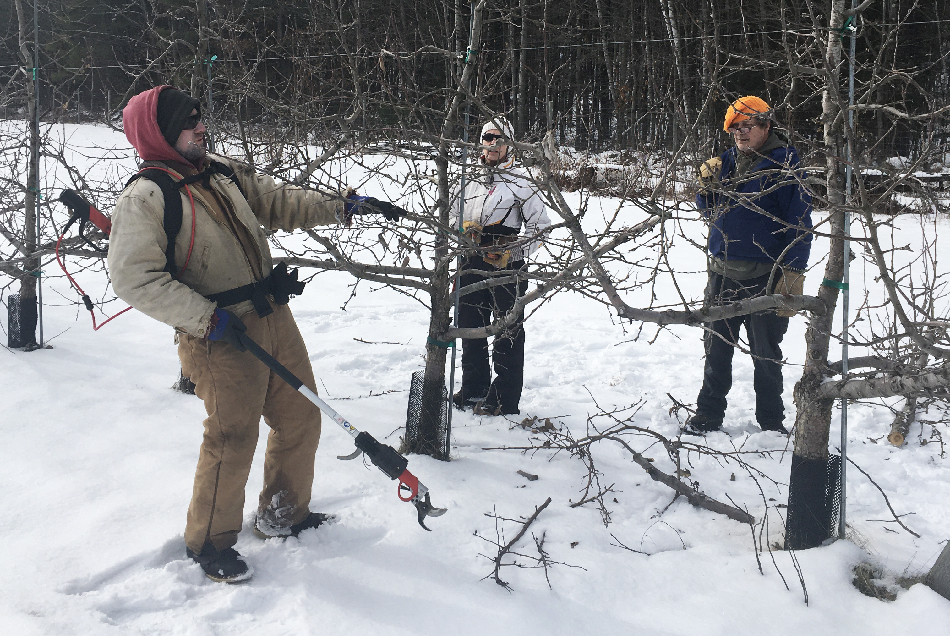Pruning is about decisions. What to cut so that maximum sunshine reaches the apples/so that apples can be harvested efficiently/so that branches don't break under heavy crop loads/so there's a newer branch well placed to fill in for an old one that needs to come off -- and many more. (Up top is a picture of the talking that helps with those decisions.)
Apple growers must prune - because our trees won't spontaneously grow tons of delicious beautiful fruit. If you're a fruit tree, the whole plan is: make more fruit trees! Make seeds, get'em planted! So un-pruned trees will crank out fruit that tempts birds and other non-humans: Put up food for critters, persuade critters to swallow some seeds, plant new trees when the critters - er - "drop" the indigestible seeds. Mission accomplished!
Hence, un-pruned apple trees will grow lots of branches that mostly angle upward. They will produce loads of green, small fruit one year, and rest up the next - they'll "go biennial." Growers have other goals. Pruning helps grow bigger fruit that can "color up" and sweeten up, because sunshine can reach it. When we reduce the overall seed output in any year, apple trees won't "rest" the following year, but will produce another crop. We're in the fruit business, not the seed business.
IF YOU HAVE BACKYARD APPLE TREES - look up "how to prune apple trees." With some basic instruction, you won't harm your trees. You WILL be interested by the results when the trees leaf out! This blog is not an instruction manual... It does show that you can shape your trees to your preference!
Below are few photos to show some different shapes that pruning produces, depending on the age of the tree, the purpose of the apple variety, etc.
Again, this is just a short pruning photo-album - not a how-to! (Snow shows up the shapes of trees, almost like a diagram.)
1) Old eating-apple varieties, Macs & Cortlands mostly, pruned for decades to push their branches outward, not upward. Pruned to grow big apples that get a lot of sun, and can be reached by pickers. Branches trained and pruned to reach outward will hold much more weight without breaking than up-reaching branches can. 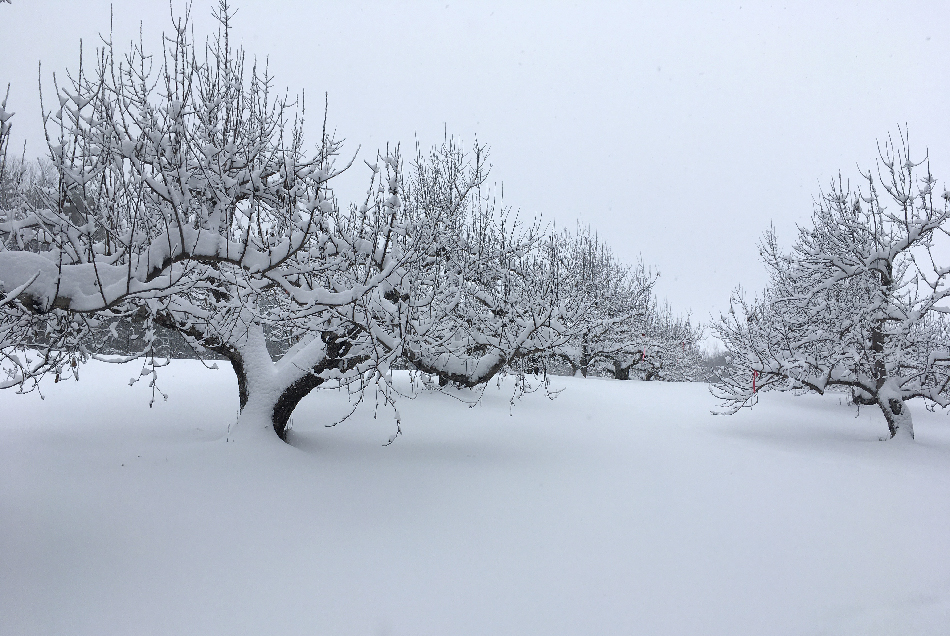
Big branches are spaced to allow picking-ladder access to the tops. (Quite a lot of housing developments can have such wide, gnarly apple trees in their yards, because so many old orchards were sold to residential developers.) At Poverty Lane/Farnum Hill, we still have several acres of big old-fashioned trees, mostly for Pick-Your-Own. Without pruning they'd be hugely tall, upright and brushy - the few powerful branches seen in the photo were chosen by pruning. (When a main branch gets too old, it's cut off so another can grow into its space.) These trees were planted nearly sixty years ago.
2) Cider-apple varieties - These are pruned for highest fruit quality - but not for picking. The branches and tops are flexible, so that gentle shaking will bring down the ripest fruit, while leaving the less-ripe apples for later. 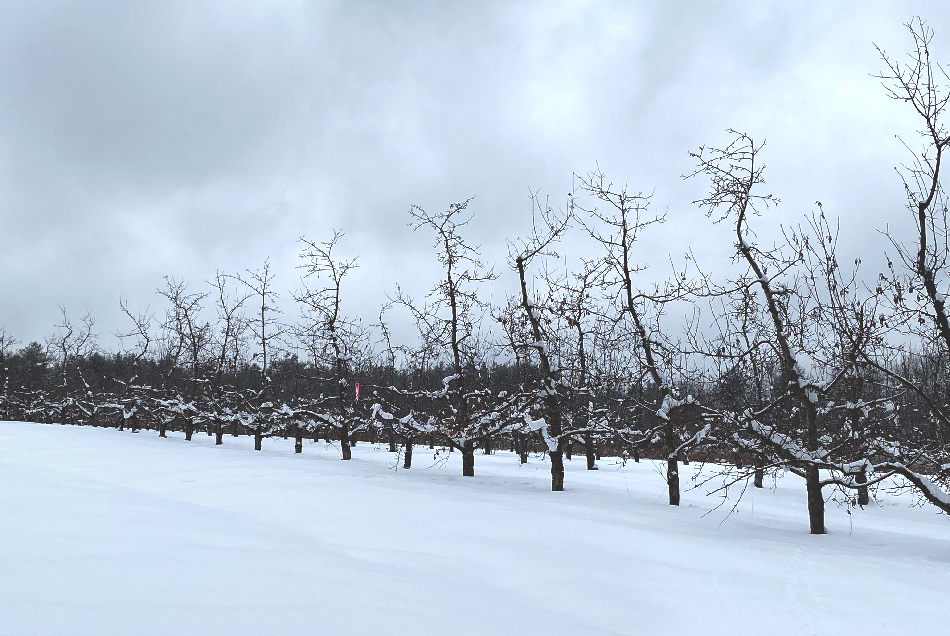
These branches and tops allow a harvest crew with a shaker pole to vibrate the wood just enough that the readiest apples will let go, to be immediately gathered at maximum ripeness. These Yarlington Mill (bittersweet) cider trees, are over twenty years old, trained and pruned every year, look very different from the dessert-apple trees above.
3) Here's a Wickson tree in our front yard, about 30 years old, pruned high so we can sit under it! It grows a lot of apples but birds and bugs are welcome to them...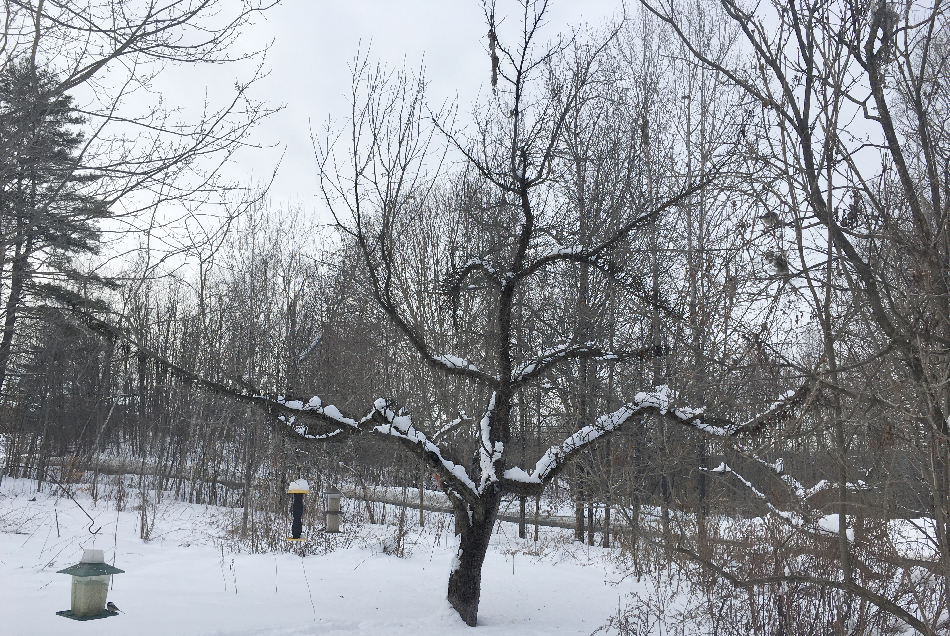 This Wickson tree is much taller and its lowest branches are much much higher than the Wicksons out in the orchard. Those are pruned for fruit quality and picking. This one is pruned for shade and prettiness. Again, pruning is all about decisions!
This Wickson tree is much taller and its lowest branches are much much higher than the Wicksons out in the orchard. Those are pruned for fruit quality and picking. This one is pruned for shade and prettiness. Again, pruning is all about decisions!
4) Winter pruning goes on - on and on and on... into early Spring. When the trees start their growing season, pruning stops. HOWEVER
if you have just a few trees, there's another, shorter pruning window in mid-summer. DO YOUR READING to get the timing right! Cutting too early or too late can disrupt the tree's metabolism. There's a lot going on under that bark!
Wish us luck! So many trees... 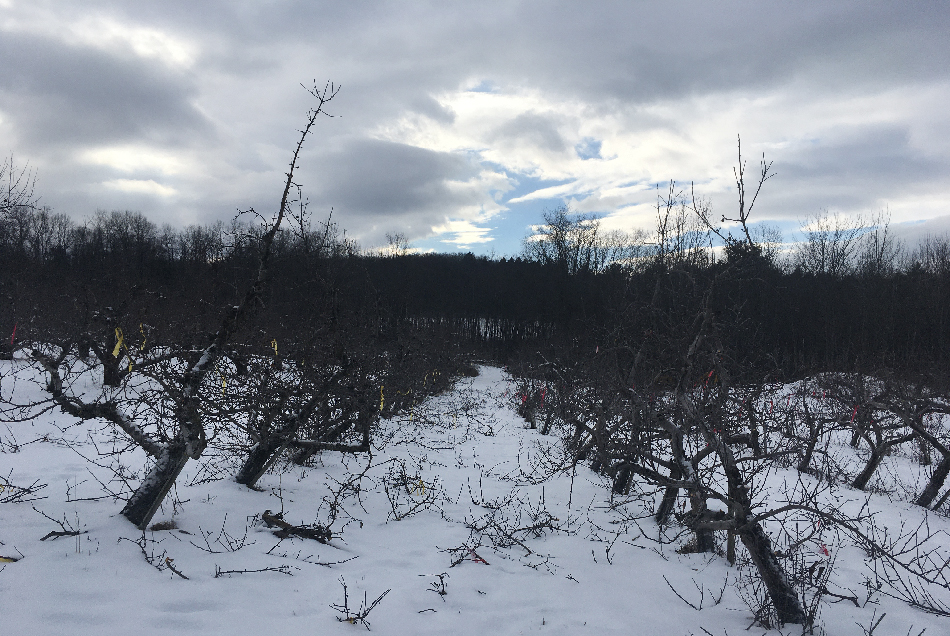
Events
